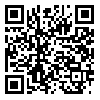Volume 14, Issue 6 (November & December 2023)
BCN 2023, 14(6): 879-884 |
Back to browse issues page
Download citation:
BibTeX | RIS | EndNote | Medlars | ProCite | Reference Manager | RefWorks
Send citation to:



BibTeX | RIS | EndNote | Medlars | ProCite | Reference Manager | RefWorks
Send citation to:
Salehbayat M, Abolfazli R, Mohebbi N, Savar S M, Shalviri G, Gholami K. Adverse Drug Reactions of Multiple Sclerosis Disease-modifying Drugs. BCN 2023; 14 (6) :879-884
URL: http://bcn.iums.ac.ir/article-1-2196-en.html
URL: http://bcn.iums.ac.ir/article-1-2196-en.html
Maryam Salehbayat1 

 , Roya Abolfazli2
, Roya Abolfazli2 

 , Niayesh Mohebbi *3
, Niayesh Mohebbi *3 

 , Seyed Mehrdad Savar4
, Seyed Mehrdad Savar4 

 , Gloria Shalviri4
, Gloria Shalviri4 

 , Kheirollah Gholami3
, Kheirollah Gholami3 




 , Roya Abolfazli2
, Roya Abolfazli2 

 , Niayesh Mohebbi *3
, Niayesh Mohebbi *3 

 , Seyed Mehrdad Savar4
, Seyed Mehrdad Savar4 

 , Gloria Shalviri4
, Gloria Shalviri4 

 , Kheirollah Gholami3
, Kheirollah Gholami3 


1- School of Pharmacy, International Campus, Tehran University of Medical Sciences, Tehran, Iran.
2- Department of Neurology, Amiralam Hospital, Tehran University of Medical Sciences, Tehran, Iran.
3- Department of Clinical Pharmacy, Rational Use of Drugs Research Center, Faculty of Pharmacy, Tehran University of Medical Sciences, Tehran, Iran.
4- Research Center for Rational Use of Drugs, Tehran University of Medical Sciences, Tehran, Iran.
2- Department of Neurology, Amiralam Hospital, Tehran University of Medical Sciences, Tehran, Iran.
3- Department of Clinical Pharmacy, Rational Use of Drugs Research Center, Faculty of Pharmacy, Tehran University of Medical Sciences, Tehran, Iran.
4- Research Center for Rational Use of Drugs, Tehran University of Medical Sciences, Tehran, Iran.
Abstract:
Introduction: High frequency of adverse drug reactions (ADRs) challenges multiple sclerosis (MS) treatment. This study aims to assess the nature and frequency of ADRs induced by MS medications in an observational cross-sectional study.
Methods: ADRs of all outpatients who had seen a neurologist and had received at least one disease-modifying therapy (DMT) for MS during the last three months were investigated.
Results: A total of 484 ADRs were detected in these patients. The preventability rate was 5.9%, and 0.61% of reactions were serious.
Conclusion: The high frequency of adverse drug reactions in this study shows a strong need for strategy planning to increase patients’ adherence to treatment.
Methods: ADRs of all outpatients who had seen a neurologist and had received at least one disease-modifying therapy (DMT) for MS during the last three months were investigated.
Results: A total of 484 ADRs were detected in these patients. The preventability rate was 5.9%, and 0.61% of reactions were serious.
Conclusion: The high frequency of adverse drug reactions in this study shows a strong need for strategy planning to increase patients’ adherence to treatment.
Type of Study: Commentary |
Subject:
Clinical Neuroscience
Received: 2021/06/23 | Accepted: 2021/08/28 | Published: 2023/11/1
Received: 2021/06/23 | Accepted: 2021/08/28 | Published: 2023/11/1
Send email to the article author
| Rights and permissions | |
 |
This work is licensed under a Creative Commons Attribution-NonCommercial 4.0 International License. |





